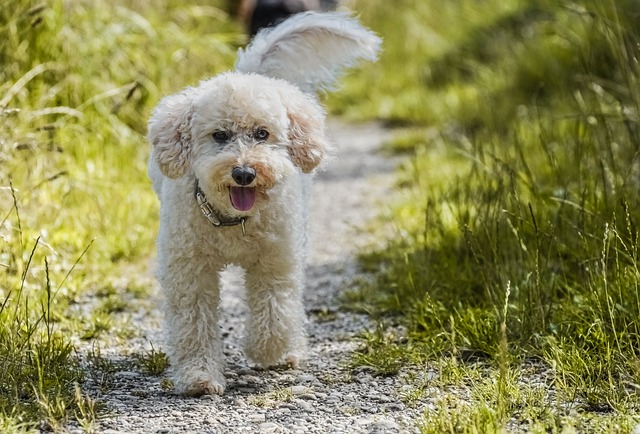
Dog training is a learning process for you as well. This is so because a person must train their own self on how to train a dog before they can in fact train a dog. To train a pet like a dog, you must first train yourself. The information below should help anyone develop these needed skills.
Try to think like a dog. Sometimes a dog will be a slow learner, and this can be frustrating. Try putting thinking like your dog would, rather than quitting. This allows you to gain more insight into what is most likely to work and what should be avoided.
Use control when rewarding good behavior during canine training. Immediately after the animal acts in accordance with your command, reward him. This helps to calm the animal and reinforce your training efforts. This will help to excite your dog and leave you in complete control. Act calmly, expect calmness, and then appropriately reward the dog.
Dog Needs
Your dog needs to lead an active lifestyle. Dogs become bored very easily. Dogs with no enthusiasm will be harder to train than active dogs. Your dog needs proper exercise to function to his highest potential. Bring your dog along when you walk or jog.
Do not allow your pet to become complacent in his training. Establish a clear set of rules and stick with it at all times. Often, people feel that they don’t need to continue working with their dog after it has finished training. Like their human owners, pets truly are creatures of habit. That is why it is vital to ensure your dog maintains a strict rule system.
When you meet an unfamiliar dog, you should go up to him slowly and allow him to sniff your hand. This lets them warm up to the scent and they’ll most likely trust you. As the dog begins to trust you, he will more likely follow your commands.
Do not spend too much time in any one training session with your dog. Dogs can quickly lose focus when you prolong activities. Start off with individual training periods of no more than 10 minutes.
Training Sessions
Never allow your training sessions to run on for too long. Dogs don’t have long attention spans so make sure that your training sessions are kept short. If you do have long training sessions, break it up so your dog can rest a little bit.
As soon as you get your puppy, the first thing to teach him/her is their name; this will help build a bond between animal and human. In the first days, frequently use your dog’s name, and reward him for responding when you call. These are the initial words your puppy must learn. Spend lots of time with your dog, so it gets to know you and understands that you are to be trusted. When you set this trust early on, the puppy will be more open to the next steps in training.
Consistently train your dog. If more than one family member is training your pet, make sure they all you the same commands, rewards and discipline. When everyone has the same command in use, the dog will pick it up quickly.
When it comes to training a puppy, it is not a good idea to provide too much information and training at one time. A puppy has a short attention span and limited energy to focus, so keep your sessions brief and as positive as possible. A training session that wears your puppy out is going to turn into an unpleasant memory, making him less likely to respond well to subsequent sessions, and more inclined to ignore what you are trying to teach him.
Make training fun for you and your dog. Aim for a 10-15 minute training session, which is optimal for the dog’s attention span. Reward quickly and consistently. Make sure you shower your dog with abundant praise when he does well. When the dog enjoys their training, they will listen better.
You need to let your dog be a dog, so give him some time to burn off that energy. Dogs need to eat well and have a good place to exercise and keep busy.
For every time that you say your dog’s name when correcting behavior, you should say his name several other times using a more positive tone. This ensures your dog doesn’t associate his name with punishments, meaning he’ll come when you call him in future.
It terms of barking, take note of the sorts of things that cause your dog to bark a great deal. When you understand the antecedent, you can manage the behavior correctly. For example, if strange people or animals cause your dog to bark, then you might need to spend more time socializing.
Now that the people who are interested in training their new pet dog have, hopefully, learned some new tricks, they can proceed to pass them along to their pets. Once a dog is on its way to learning, the owner will begin to appreciate the dedication that he or she has shown for doing the right thing for man’s best friend.